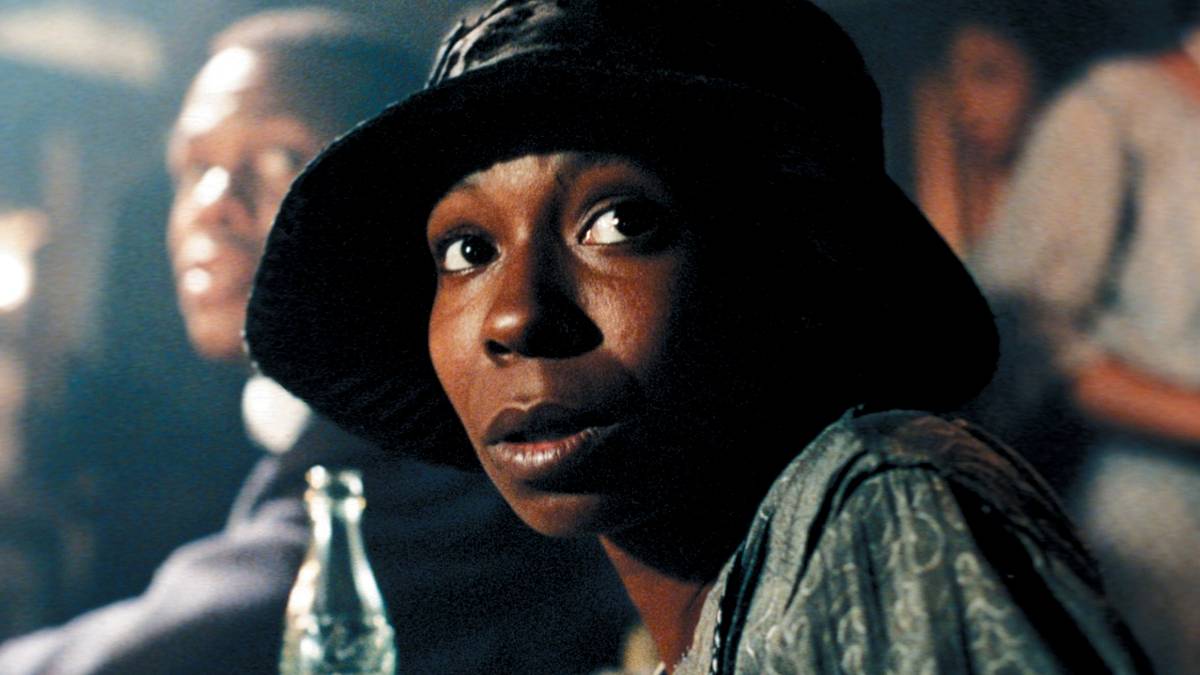There’s no doubt about it: Steven Spielberg knows how to make a good film, including two adaptations of The Color Purple released almost 40 years apart. Even those who aren’t movie buffs know who Spielberg is, what he has done, and how he has singlehandedly impacted the film industry. From Jaws (1975) to West Side Story (2021), it seems like there isn’t a story that Spielberg can’t tell. He has worked on a variety of original films over the years, but as West Side Story proves, the director/producer/writer has had a hand in plenty of adaptations with excellent results. Spielberg-directed adaptations outside The Color Purple and West Side Story include (but are certainly not limited to) Schindler’s List (1993), Lincoln (2012), and Ready Player One (2018).
There’s only one story that Spielberg has adapted for film more than once, and that’s The Color Purple. In 1985, Spielberg directed the epic period drama. His eighth film was a critical and commercial success. Nearly four decades later, he returned to make another version of The Color Purple, which was released on Christmas Day 2023 in the United States. Although Spielberg was involved as a producer (with the film directed by Blitz Bazawule), there’s no doubt that both versions of The Color Purple that now exist are masterpieces in their own distinct right.
The Color Purple Is Alice Walker’s Timeless Classic
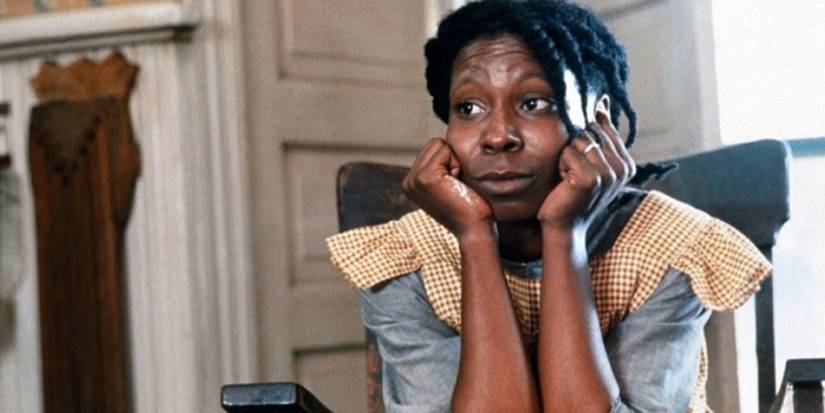
Celie leaning on her hands in The Color PurpleCredit: Image via Amblin Entertainment
Although The Color Purple has been the victim of censorship for decades, millennials may be familiar with this book if it made their school’s roster of required reading material. Released in 1982, The Color Purple is an epistolary novel (a story told through letters) that revolves around Celie Harris-Johnson, a young girl living in early 20th-century Georgia. Although Celie is abused by her father growing up, she experiences an entirely new world of violence when she is forced to marry Mister, a farmer.
As Celie grows up, she undergoes a dramatic transformation rooted in self-discovery, friendship, and a dedicated search for the truth. Other important characters include Nettie (Celie’s younger sister), Harpo (Mister’s son), Sofia (Harpo’s wife), Shug (Mister’s lover/entertainer), and Alfonso (Celie and Nettie’s father).
Set in the deep South during the Jim Crow era, Walker’s The Color Purple focuses on themes including self-discovery, racism and sexism towards Black women, womanhood, and the importance of solidarity, as well as religion. Upon release, Walker became the first Black woman to win the Pulitzer Prize for Fiction, which was awarded in 1983. Despite its controversial material, the novel has also been routinely cited as one of the best books to read, and one that is universally loved and appreciated.
Both Versions of The Color Purple Are Required Viewing
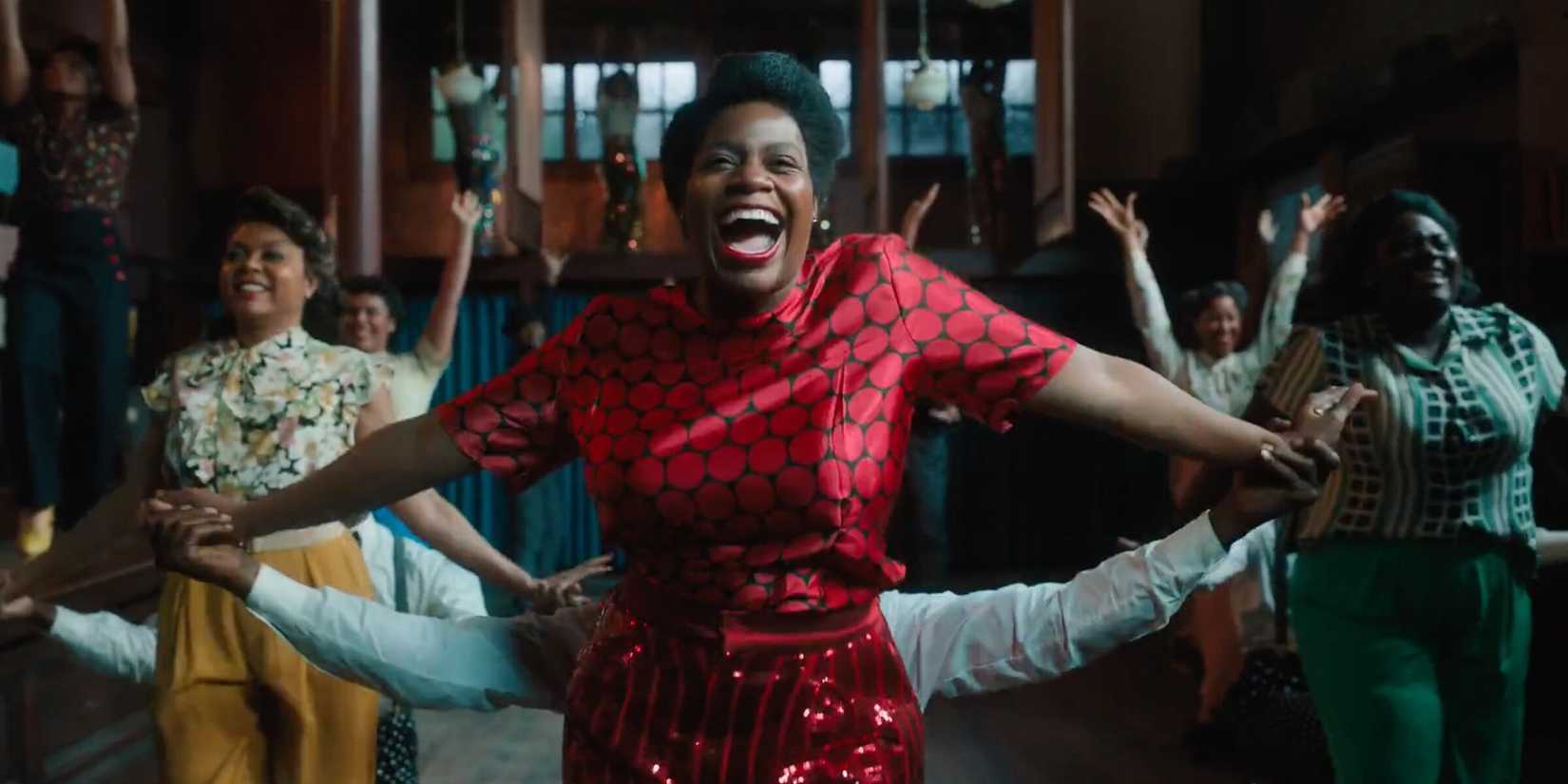
Fantasia Barrino sings during a scene from The Color PurpleCredit: Image via Warner Bros. Pictures
There are high stakes at play when it comes to adapting a book, and the bar instantly rises for subsequent adaptations. Spielberg knows this all too well himself, considering that the latest version of West Side Story was released 50 years after Robert Wise and Jerome Robbins made cinematic history in 1961. Like the musical drama and its eventual successor, The Color Purple (1985) and The Color Purple (2023) are two adaptations of the same story that stand well against each other. Hands down, the best part and most standout aspect of both versions of Walker’s story is the actors and how accurately they portray their characters.
As Celie, Whoopi Goldberg and Fantasia Barrino nail the protagonist’s complex emotional and physical journey (Goldberg makes a brief cameo in the 2023 adaptation). In general, both ensemble casts are composed of prolific actors and high-profile entertainers, which adds a powerful dynamic to the story in general.
The Color Purple Character
Portrayed By (1985)
Portrayed By (2023)
Celie Harris-Johnson
Whoopi Goldberg
Fantasia Barrino
Albert “Mister” Johnson
Danny Glover
Colman Domingo
Shug Avery
Margaret Avery
Taraji P. Henson
Sofia
Oprah Winfrey
Danielle Brooks
Nettie Harris
Akosua Busia
Halle Bailey/Ciara
Harpo Johnson
William Pugh
Corey Hawkins
Swain
Larry Fishburne
Jon Batiste
Mary “Squeak” Agnes
Rae Dawn Chong
H.E.R.
What makes both versions of The Color Purple stand out, alongside their respective ensemble casts, is the detailed and emotionally charged cinematography, accompanied by an equally well-composed musical score. Although Spielberg’s involvement in each adaptation has been criticized by some (for, perhaps, taking another person’s place who may better connect with Walker’s source material), there’s no doubt that the lighting, composition, and camera shots in the 1985 and 2023 versions of The Color Purple are worthy of praise. They help Celie’s story, and the cruel lifestyle she endured living in the Jim Crow South, come to life with hyperrealism.
The score of the 1985 film was composed by Quincy Jones, who served as an executive producer alongside Spielberg in the 2023 adaptation. The latter film’s score was composed by Kris Bowers (Green Book, King Richard).
How The Color Purple Films Differ (& How They’re Alike)
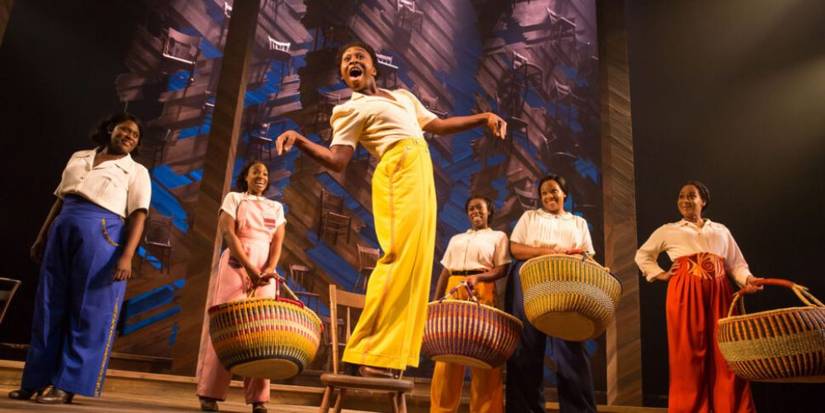
Women dancing The Color Purple Credit: Image via Warner Bros. Pictures
The Color Purple (1985) and The Color Purple (2023) are adaptations of the same story, but are quite different in multiple ways. For one (and to get the obvious out of the way), Spielberg’s second go-around at The Color Purple is a musical—the 2023 film is, in particular, an adaptation of the Broadway musical; the musical initially ran on Broadway from 2005 to 2008. The 1985 version of The Color Purple is a straight-line adaptation of the book exclusively. Songs from the Broadway musical that made it into the 2-year-old period drama (that some might recognize, whether they know the source material) include “Huckleberry Pie”https://www.cbr.com/”Mysterious Ways”, “What About Love?”, and “The Color Purple.”
As far as which adaptation is more faithful to Walker’s novel, Spielberg’s original 1985 period drama reigns supreme. The 2023 adaptation of The Color Purple captured Celie’s journey and the heavy emotional impact, but it largely omitted one very important thing: the true amount of violence and abuse that Celie experienced. Throughout the book, Walker absolutely does not shy away from deeply describing the heinous acts inflicted on Celie, as well as Celie’s attempts to regain her sense of self. Throughout the latest Color Purple film, many of these brutal acts are implied, and not directly shown. In contrast, the 1985 version of The Color Purple does not shy away from depicting the horrifying damage inflicted on Celie, although they are somewhat dulled for the screen.
With the addition of musical numbers to the newest version of The Color Purple, it’s safe to say that the adaptations of Walker’s novel have a different feel to them, with their ambiance sometimes feeling as though they live on opposite sides of the spectrum. Spielberg’s original work in 1985 is, like the story itself, quite depressing and toned down. With no musical numbers to give a boost, the first adaptation of The Color Purple is overrun with desperate emotion and Celie’s fight for survival. The 2023 adaptation of the Broadway musical is emotional, of course, but the overall ambiance comes off less downtrodden and more celebratory, with a more intense focus on vibrant colors.
All of that said, the 1985 and 2023 versions of The Color Purple work because both films get several things right. Goldberg portrayed the adult version of Celie fantastically in the ’80s, as did Barrino almost four decades later. The same can be said when comparing both portrayals of Nettie, Shug, and even Mister. When it comes to some of the major moments that fuel the events of The Color Purple (such as when Celie finally stands up to Mister), both films beautifully capture them. In all, Spielberg’s contributions to both films differ, but undisputably follow and share Walker’s core themes of love, resilience, sense of self, and self-worth.
What’s Next For Steven Spielberg & The Color Purple?
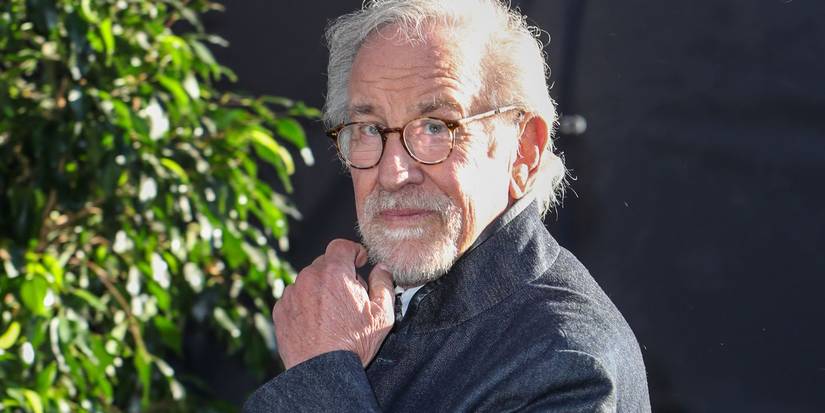
steven-spielberg-the-thursday-murder-club-london-premiereCredit: Image via John Rainford/Cover Images
Spielberg is a few months shy of 79, yet the director/producer/writer’s career shows no signs of slowing down anytime soon. Between January 2024 and September 2025, Spielberg has executively produced three films (Twisters, Transformers One, and Jurassic World Rebirth); Spielberg’s recent producer credits also include the documentary film Music by John Williams (2024) and Hamnet (2025).
The last feature film that Spielberg directed was The Fabelmans (2022), which he also produced and wrote. Although Spielberg’s next film doesn’t have a release date just yet (or even a title), fans of his work can expect a new science-fiction tale (starring Emily Blunt, Josh O’Connor, Colin Firth, Wyatt Russell, and Colman Domingo, among others) sometime in 2026.
As for The Color Purple, Walker’s novel and overall legacy remain solidified in both pop culture and literary circles. As of September 2025, there are no plans to reboot, reinvent, or showcase the work in any medium again—the Broadway musical closed its doors in 2017 after a successful revival, which won two Tony Awards (including Best Revival of a Musical). Several countries briefly produced their own versions of the musical in 2019 (including Brazil and Canada).
Still, based on how the 2023 version of The Color Purple fared, there’s no present reason to adapt the work any further—Spielberg and the rest of the cast and crew behind both versions of Walker’s novel understood the assignment, and delivered excellently.
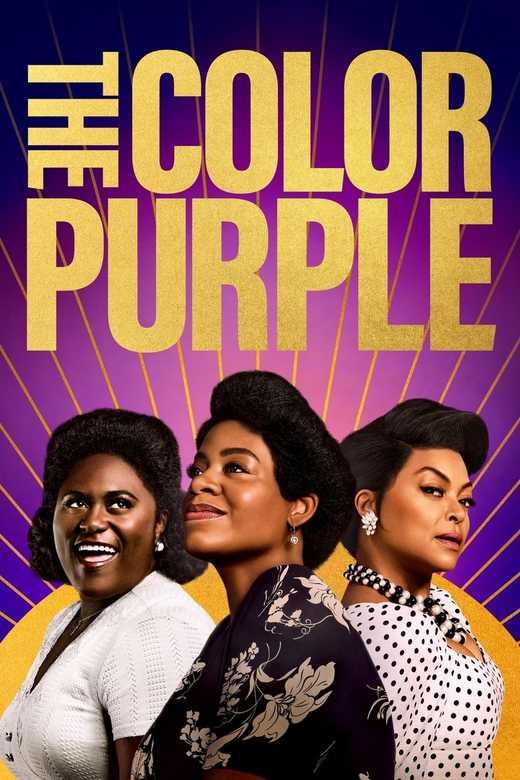
Release Date
December 25, 2023
Runtime
141 minutes
Director
Blitz Bazawule
Writers
Marcus Gardley, Alice Walker


Taraji P. Henson
Shug Avery


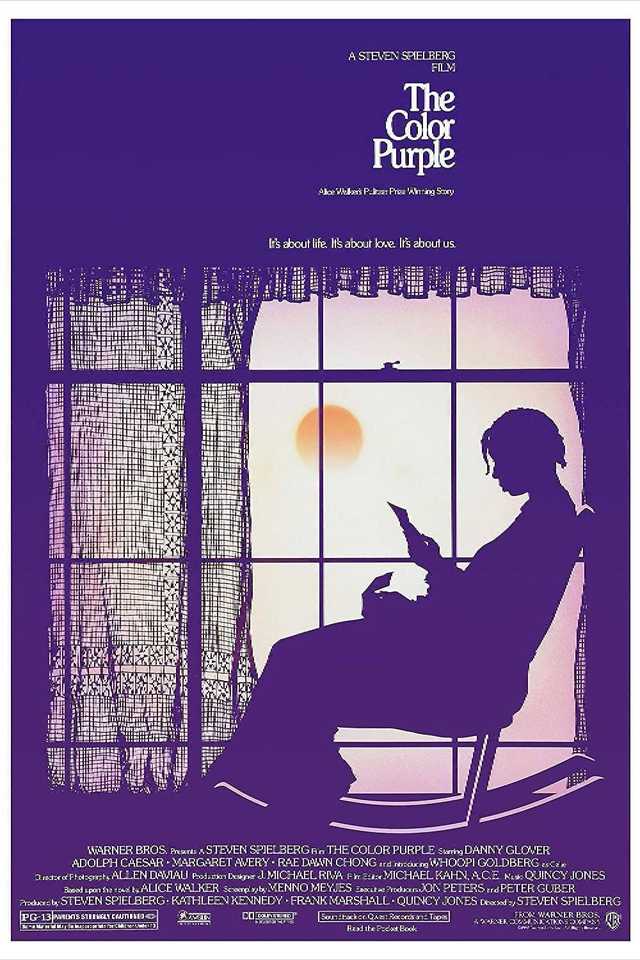
Release Date
December 18, 1985
Runtime
154 Minutes
Director
Steven Spielberg
Writers
Steven Spielberg, Alice Walker, Menno Meyjes



Margaret Avery
Shug Avery


